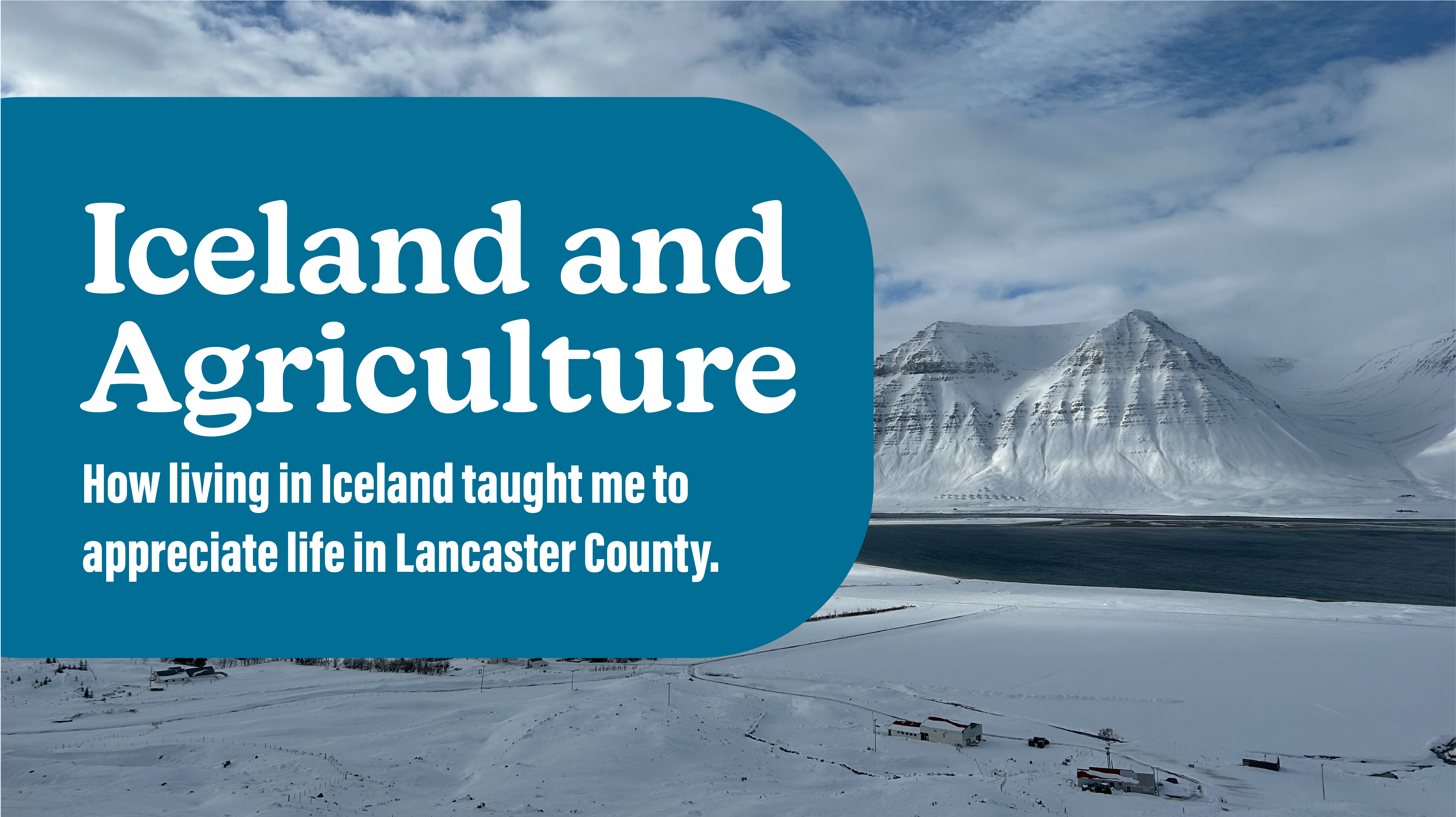Iceland and Agriculture: How living in Iceland taught me to appreciate life in Lancaster County

As someone who grew up in New York in the epitome of American suburbs, it shocked everyone – including myself, when I decided to attend college in Lancaster County, Pennsylvania. Most of my friends and family assumed I was moving to “the cornfields” and couldn’t quite understand the appeal of an area mainly surrounded by farmland – I didn’t understand it either. That is, until I experienced life in a place with an antithetical landscape to Lancaster: Iceland.
I spent the spring of my junior year of college studying abroad in Iceland, taking classes in climate modeling, carbon management, and arctic ecosystems. Despite Iceland and Pennsylvania being similar in size, their environments could not be more different! Everyone in my life seemed to first ask about the weather differences, and yes, Iceland is much colder, but the main difference was in the physical landscape. Only about 2% of Iceland is wooded, contrasting the 60% of land in Pennsylvania made of forests. Beyond that, Iceland contains only 20 nameable farms, whereas Lancaster County alone has over 5,000! Even sheep and dairy farming, both incredibly valuable to Icelandic identity and culture, are beat out in number by Pennsylvania farms.
What relevance could this have to me, though? As Lancaster Farmland Trust says, “If we lose our farmland, we lose so much more than our farmland.” This lack of farming in Iceland, particularly the lack of farmland dedicated to produce, impacted my life greatly despite living there for less than six months. At every grocery store, produce was so expensive! Strawberries that would cost less than four U.S. dollars were now eight to nine U.S. dollars! There was also a notable difference in produce quality. Only a few crops can be farmed in the rigid Icelandic soils, such as blueberries and rhubarb, but these crops are often very small in size. Produce shipped to Iceland has a short shelf life, as it was harvested long before reaching Iceland. The increased cost and decreased produce quality meant fruits and vegetables were much less likely to appear in meals. Instead, they were replaced by foods with a stronger Icelandic identity, like cheese and fish. These modifications drastically changed how I ate, creating a diet reliant on entirely different food groups.
I am someone who appreciates food on a deeper level than simply viewing it as sustenance. For me, it has always served to connect with people. This became crucial to my experience in Iceland as the people I surrounded myself with quickly became a community with whom I wanted to share parts of myself. The first night I felt truly at home with my host family was when I had an Icelandic candy taste test with my host mom and brother. The first time I felt like I had made a true friend within my cohort was when we stayed up late to talk and make grilled cheese sandwiches. My last night was spent sitting at a table with all these strangers who had become family, sharing one final meal and making one last toast. Food also allowed me to stay connected to people back home. Whenever I ate something delicious, I would think, “I wish my sister could try this.” I even brought home a suitcase full of Prince Polos (a popular chocolate bar) for my dad to try. These new food groups altered the relationships I had built, allowing me to immerse myself in another culture but question why I was lured to Lancaster County for college in the first place.
What I realized is how much agriculture shapes culture. Because sheep farms are the most prevalent farming in Iceland, they are known for their Icelandic wools and sweaters. Because one of the only crops grown in Iceland is rhubarb, Happy Marriage Cake, or Hjónabandssæla, made to celebrate rhubarb’s flavors, was at every celebration.
The same goes for Lancaster County. We shop at Central Market for locally grown vegetables to cook for dinner parties. We buy eggs from our neighbors’ chickens to make our birthday cakes. The work being done at farms across Lancaster County, whether with livestock or produce, forms the culture we share with one another. It makes me feel even more connected to the food I already love. The last thing I expected was to return to the U.S. with a newfound reverence for farming, but sometimes, the things that matter most aren’t visible until you go without them.
References:
